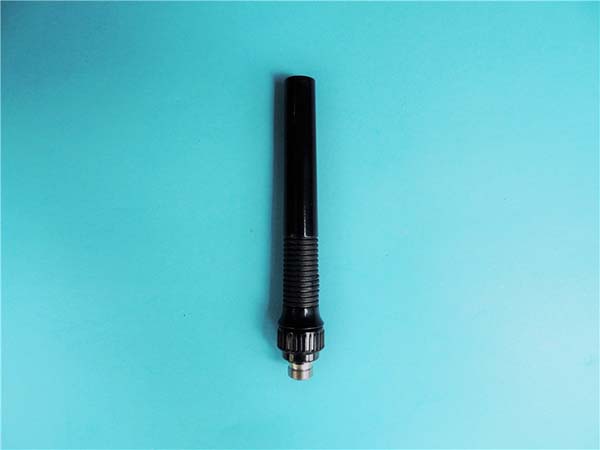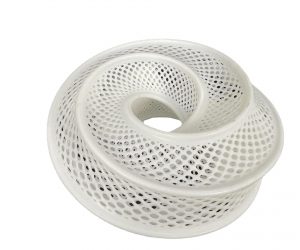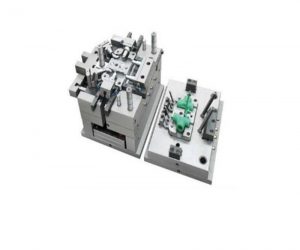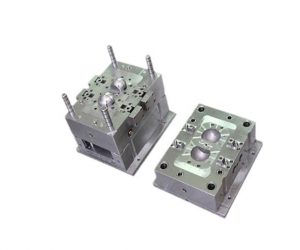1. Introduction: The Art and Science of Precision Turning
In the intricate world of modern manufacturing, precision turning components stand as the unsung heroes, silently enabling the seamless operation of a vast array of industries. From the high - stakes aerospace sector, where the tiniest deviation can lead to catastrophic consequences, to the delicate realm of medical devices, where patient safety and treatment efficacy hinge on micron - level accuracy, precision turning is the cornerstone of quality and reliability.
Precision turning is a subtractive manufacturing process that involves the use of a lathe to remove material from a rotating workpiece, typically made of metal, plastic, or ceramic. The cutting tool, which is stationary in most cases, is fed into the workpiece at a precisely controlled rate, angle, and depth, resulting in the creation of a highly accurate and smooth surface finish. This process can produce components with tolerances as tight as ±0.0001 inches (±2.54 microns) or even better in some advanced applications, far beyond the capabilities of traditional machining methods.
As technology continues to advance and industries become more competitive, the demand for precision turning components with even higher levels of accuracy, complexity, and performance is only going to increase. This trend is driving the development of new materials, cutting - edge machining technologies, and innovative manufacturing processes, as well as the need for highly skilled and knowledgeable professionals who can master the art and science of precision turning. In the following sections, Yigu Technology will explore the key players, technologies, and innovations that are shaping the future of precision turning component manufacturing, and how they are helping industries around the world achieve new levels of excellence.
2. Technical Foundations of Precision Turning
2.1 Core Processes and Technologies
Precision turning is underpinned by a set of advanced processes and technologies that enable the creation of components with extremely tight tolerances and complex geometries. These technologies are the backbone of the precision turning industry, and their continuous development is crucial for meeting the ever - increasing demands of modern manufacturing.
CNC Turning
Computer Numerical Control (CNC) turning is at the forefront of precision machining. CNC machines are programmed to execute a series of precise movements, allowing for the production of components with remarkable accuracy. These machines can achieve tolerances as tight as ±0.005mm, which is essential for applications where even the slightest deviation can have significant consequences.
High - speed spindles, capable of reaching speeds of up to 50,000 RPM, are a key feature of modern CNC turning machines. The high rotational speed enables faster material removal rates, improving productivity without sacrificing precision. In addition, diamond - tipped tools are often used in CNC turning. Diamond is an extremely hard material, and its use as a cutting tool can significantly improve the surface finish of the workpiece. For Yigu Technology example, in the production of optical components, diamond - tipped tools can create surfaces with a roughness of less than 0.1μm, which is crucial for minimizing light scattering and ensuring high - quality optical performance.
Swiss - Type Machining
Swiss - type machining, also known as Swiss - screw machining, is particularly well - suited for the production of long, slender components. This method is characterized by the use of a guide bushing that supports the workpiece close to the cutting tool. The guide bushing reduces vibration and improves concentricity, allowing for the production of components with concentricity errors of less than 5μm.
One of the main advantages of Swiss - type machining is its ability to produce complex geometries in a single setup. The method often involves the use of multiple tools that can be simultaneously engaged with the workpiece, enabling the creation of features such as grooves, threads, and holes along the length of the component. For instance, in the production of medical implants, Swiss - type machining can be used to create intricate internal and external features that are essential for the proper functioning of the implant.
Multi - Axis Machining
Multi - axis machining, especially 5 - axis machining, has revolutionized the precision turning industry by enabling the production of highly complex geometries. In a 5 - axis system, the workpiece can be rotated and tilted in multiple directions, while the cutting tool can also move in multiple axes. This allows for the machining of parts with complex shapes, such as helical grooves and internal threads, which would be extremely difficult or impossible to produce using traditional machining methods.
For example, in the aerospace industry, 5 - axis machining is used to produce turbine blades with complex airfoil shapes. The ability to machine these blades in a single setup reduces the need for multiple operations and the associated errors that can occur during re - fixturing. As a result, 5 - axis machining can improve the accuracy, quality, and efficiency of turbine blade production.
The following Yigu Technology table summarizes the key features and capabilities of these core precision turning processes:
| Process | Tolerance | Ideal for | Key Features |
| CNC Turning | ±0.005mm | General precision components | High - speed spindles (up to 50,000 RPM), diamond - tipped tools |
| Swiss - Type Machining | Concentricity <5μm | Long, slender components | Guide bushing for reduced vibration, multi - tool operation |
| Multi - Axis Machining (5 - axis) | Complex geometries | Components with intricate shapes | Simultaneous 5 - axis movement of workpiece and tool |
2.2 Material Selection and Performance
The choice of materials in precision turning is as critical as the machining processes themselves. Different materials offer unique combinations of properties, and selecting the right material is essential for ensuring the performance, durability, and functionality of the final component.
Titanium Alloys
Titanium alloys are highly valued in industries such as aerospace and medical implants due to their exceptional strength - to - weight ratio. These alloys can offer high strength while remaining relatively lightweight, making them ideal for applications where weight reduction is crucial without sacrificing structural integrity. In the aerospace industry, for Yigu Technology example, the use of titanium alloys in engine components can reduce the overall weight of the engine, leading to improved fuel efficiency and performance.
In the medical field, titanium alloys are commonly used for implants because they are biocompatible, meaning they are well - tolerated by the human body and are less likely to cause an adverse immune response. Their corrosion - resistance also ensures the long - term stability of the implant within the body. For instance, titanium alloy hip implants can last for many years, providing reliable support and functionality to the patient.
Stainless Steel 316L
Stainless steel 316L is a popular choice for applications that require biocompatibility and corrosion - resistance, such as surgical tools. The "L" in 316L stands for low carbon, which reduces the risk of carbide precipitation and improves the material's corrosion - resistance, especially in harsh environments.
Surgical tools made from 316L stainless steel need to maintain their sharpness and integrity over time, even when exposed to sterilization processes and body fluids. The biocompatibility of 316L ensures that it does not leach harmful substances into the body during surgical procedures, protecting the patient's health.
Inconel 718
Inconel 718 is a nickel - based superalloy with excellent heat - resistance, making it suitable for applications where components must endure high temperatures. Turbine components in power generation and aerospace engines often operate at temperatures of up to 800°C, and Inconel 718 can maintain its mechanical properties under such extreme conditions.
The alloy's high - temperature strength, corrosion - resistance, and fatigue - resistance make it a reliable choice for these demanding applications. For example, turbine blades made from Inconel 718 can withstand the high - speed rotation and extreme heat within a gas turbine engine, ensuring efficient power generation and reliable operation over long service intervals.
The properties of these materials are compared in the following Yigu Technology table:
| Material | Key Property | Application Example |
| Titanium Alloys | High strength - to - weight ratio, biocompatible | Aerospace engine components, medical implants |
| Stainless Steel 316L | Biocompatible, corrosion - resistant | Surgical tools |
| Inconel 718 | Heat - resistant (up to 800°C) | Turbine components in power generation and aerospace engines |
4. Precision Turning vs. Traditional Machining: A Comparative Analysis
When considering the manufacturing of components, the choice between precision turning and traditional machining methods is a crucial decision that can significantly impact the quality, cost, and efficiency of the production process. A detailed comparison between these two approaches reveals the distinct advantages of precision turning in meeting the demands of modern industries.
4.1 Tolerance and Accuracy
One of the most significant differences between precision turning and traditional machining lies in their ability to achieve tight tolerances. Precision turning can consistently produce components with tolerances as tight as ±0.005mm. In contrast, conventional machining methods typically have a tolerance range of ±0.05mm.
This high level of accuracy in precision turning is essential for industries such as aerospace and medical devices. For Yigu Technology example, in the production of aerospace engine components, a small deviation from the specified tolerance can lead to increased vibrations, reduced fuel efficiency, and even engine failure. In the medical field, implants require precise tolerances to ensure a proper fit within the body and to minimize the risk of rejection. A hip implant, for instance, must match the patient's anatomy precisely, and precision turning enables the production of components that meet these stringent requirements.
4.2 Surface Finish
The surface finish of a component is another critical factor, especially in applications where friction, wear, and aesthetics are important considerations. Precision turning can achieve a surface finish with a roughness value (Ra) in the range of 0.2 - 0.8μm. Traditional machining, on the other hand, generally results in a surface finish with an Ra value of 1.6 - 6.3μm.
In the automotive industry, components such as engine cylinders and pistons require a smooth surface finish to reduce friction and improve fuel efficiency. Precision - turned engine cylinders have a smoother surface, which reduces the amount of energy wasted due to friction between the piston and the cylinder wall. This not only improves the performance of the engine but also extends its lifespan.
4.3 Material Waste
Material waste is an important economic and environmental consideration in manufacturing. Precision turning typically results in a material waste of 15 - 20%. The precise control over the material removal process in precision turning allows for efficient use of raw materials. In contrast, traditional machining methods can generate material waste as high as 30 - 50%.
For example, in the production of components from expensive materials like titanium alloys or Inconel, the lower material waste associated with precision turning can lead to significant cost savings. These savings can be especially crucial for small - to - medium - sized enterprises that may have limited budgets for raw materials.
4.4 Cycle Time for Complex Parts
The time required to produce complex components is a key factor in production efficiency. Precision turning can complete the production of complex parts in 2 - 4 hours. This is due to the advanced technologies such as multi - axis machining and high - speed spindles used in precision turning, which enable faster and more efficient machining operations. In contrast, traditional machining methods may take 8 - 12 hours to produce the same complex parts.
In the electronics industry, where the demand for small, complex components is high, the shorter cycle time of precision turning allows manufacturers to meet tight production schedules and quickly respond to market demands. This can give companies a competitive edge in the market by enabling them to bring products to market faster.
The following Yigu Technology table summarizes the comparison between precision turning and traditional machining:
| Parameter | Precision Turning | Conventional Machining |
| Tolerance | ±0.005mm | ±0.05mm |
| Surface Finish (Ra) | 0.2–0.8μm | 1.6–6.3μm |
| Material Waste | 15–20% | 30–50% |
| Cycle Time for Complex Parts | 2–4 hours | 8–12 hours |
In Yigu Technology conclusion, precision turning offers significant advantages over traditional machining in terms of tolerance, surface finish, material waste, and cycle time for complex parts. These advantages make precision turning the preferred choice for industries that demand high - quality, high - precision components. As technology continues to advance, precision turning is likely to become even more efficient and precise, further expanding its applications and impact on modern manufacturing.
FAQ
Q1: Which industries have the highest demand for precision turning components?
A: The aerospace, medical, and semiconductor industries have the highest demand. In aerospace, precision - turned components like turbine blades and engine shafts need to meet extremely tight tolerances to ensure flight safety and engine efficiency. Medical devices, such as implants and surgical instruments, require precision to guarantee patient safety and proper functionality. The semiconductor industry depends on precision turning for manufacturing components like wafer carriers with sub - micron accuracy to support the miniaturization of electronic devices.
Q2: How does precision turning compare to 3D printing in terms of manufacturing capabilities?
A: 3D printing offers design freedom, especially for complex geometries, as it builds parts layer by layer. However, precision turning provides a superior surface finish, often achieving a roughness value (Ra) in the range of 0.2 - 0.8μm compared to the relatively rougher surface of 3D - printed parts. Precision turning also results in better material properties for high - stress applications, as the subtractive process does not introduce the layer - by - layer structure and potential porosity issues associated with 3D printing. For example, in the production of engine components, precision - turned parts can withstand higher mechanical stresses due to their more uniform material structure.
Q3: What technological advancements are expected to shape the future of precision turning component manufacturing?
A: The future of precision turning will be shaped by the integration of artificial intelligence (AI) and the Internet of Things (IoT). AI can optimize machining parameters in real - time, adjusting for factors like tool wear and material variations to improve precision and reduce waste. IoT - enabled sensors can monitor the machining process, providing valuable data for predictive maintenance and quality control. Additionally, the development and use of sustainable materials will be crucial, allowing for more environmentally friendly manufacturing processes without sacrificing precision or performance.





